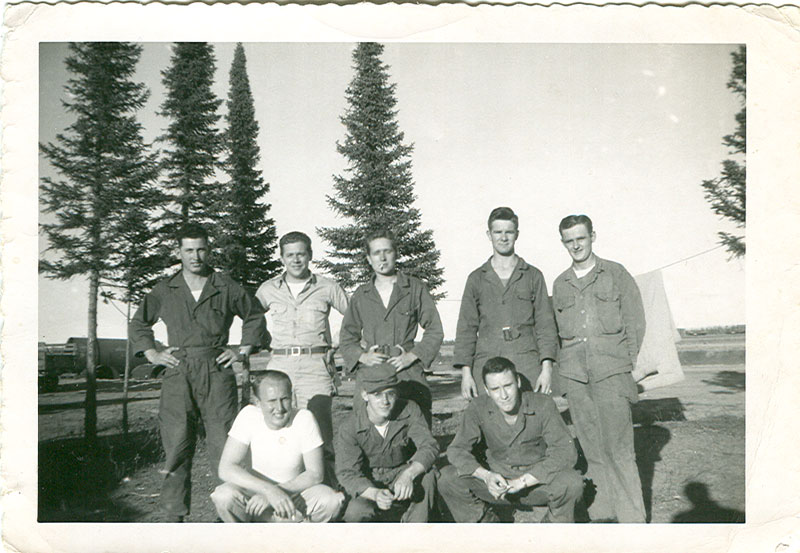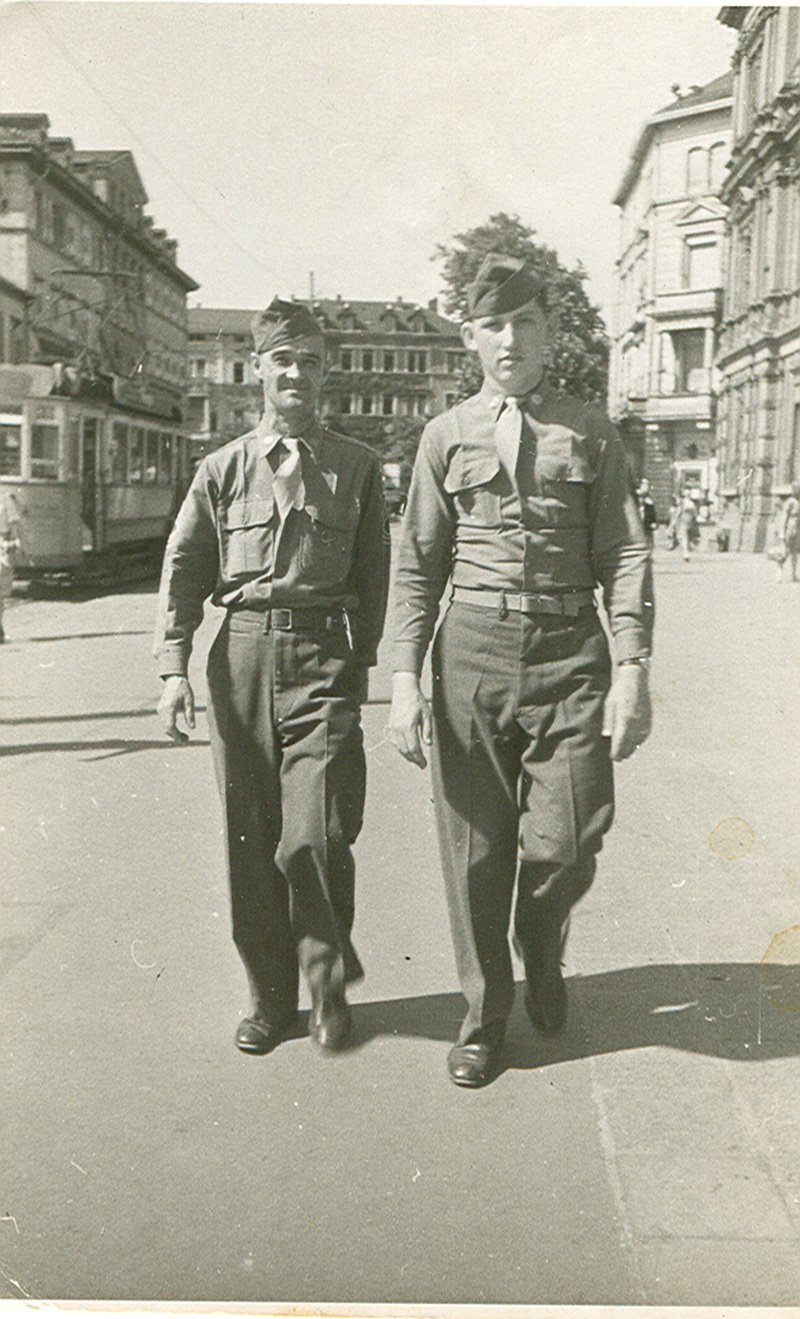
|
Broad Ripple Random Ripplings

The news from Broad Ripple
Brought to you by The Broad Ripple Gazette
(Delivering the news since 2004, every two weeks)

|
| Brought to you by: |

|

|

|

|

|

|
Converted from paper version of the Broad Ripple Gazette (v04n18)
Broad Ripple historical figure: Paul Taylor - By Mario Morone
posted: Sept. 07, 2007
Local Barber, World War II veteran, neighborhood friend - Part One
Many barbershops today are under corporate ownership, like many areas of retail. However, Paul Taylor's neighborhood barbershop at 648 East 52nd Street remains an American institution, like baseball, hotdogs and apple pie in Indianapolis since it's opening in 1961.

image courtesy of Paul Taylor
Paul grew up on the south side of Indianapolis with two brothers and four sisters. He was drafted into the US Army just two days after his high school graduation in May of 1945.
He spent 10 days in Camp Atterbury before being transferred to Camp Walters, located in Mineral Wells, Texas, which is west of Dallas. Paul's unit was Company A, 55th Battalion. While there, Paul underwent 17 weeks of intensive infantry basic training in village fighting for a future tour of duty in Japan before his military assignment changed. "After President Truman halted the dropping of bombs on Japan, we turned in our weapons and jungle equipment and were reassigned to Europe," Paul said. He was also stationed at Fort Ord in California, which is located near Salinas and Monterey before he and his fellow soldiers proceeded to ride a train for about six days from California to Camp Shanks in New York. They boarded a ship the next day to La Harve, France, located on the English Channel. This was the first of two trips Paul made from New York with the military.
Paul spent 24 hours in La Harve before continuing onward to Germany. "In December, 1945, I spent six days and six nights in a box car with 29 fellow soldiers with no toilet facilities before we arrived in Bamberg, Germany. We were there for about eight days before moving onward to Munich. When we arrived, nearly two-thirds of Munich was destroyed. People were given rations of 1,400 calories of food per day. Scrips were substituted for money for purchases of various provisions. The city had a 9 p.m. curfew. Everyone, including military personnel, had to be off the streets. It was a very dangerous place at the time," Paul explained. He carried a .45 handgun manufactured in Czechoslovakia that was issued by the military.
"I served in the Special Units (division) and had a good experience in Germany. The Germans were not initially happy that American soldiers were occupying their country, but they were eventually grateful we were there as conditions improved. After 1946, Germany began making economic and social progress as the streets became safer and the curfew was lifted", Paul said
Paul at Fort Bellvoir, VA in early 1949, after attending President Truman's inauguration.

image courtesy of Paul Taylor
During a two-week leave, Paul and a fellow GI toured Switzerland aboard the Glacier Express, which is considered one of the world's most scenic train rides. They visited Basel, Interlaken, Lausanne, Lucerne, St. Moritz and Zermatt. Upon their return to Munich, they learned that their Army unit was deactivated and left the city. They met with an Army Captain and were reassigned.
In Heidelberg, Germany, Paul worked in a colonel's office for the Army's Provost Marshall, who oversaw 180,000 military personnel. It was a six-story building where he operated a message center, handling incoming and outgoing correspondence. There were a total of 35 GIs in Paul's contingent who stayed in different houses.
During his time served in Mannheim, he and another GI stayed with a Nazi family, which included a German woman and her child. The woman's husband, an SS officer, was imprisoned. "We couldn't communicate much, because we didn't speak German and they didn't speak English. The SS prisoners polished shoes, cleaned windows and scrubbed floors", he said.
One of the scariest moments Paul encountered was aboard the ship to Goose Bay from New York, which was his second time sailing from the Empire State. "On the way to Goose Bay, I was awakened about three o'clock in the morning when I heard a deafening crash and fell out of my bunk. The entire ship shook from side to side. I dressed quickly and ran up to the ship's top deck. A huge iceberg scraped the side of the ship, peeling off a significant amount of paint," Paul recalled. He said that it is very difficult to determine the size of an iceberg since about nine-tenths of them remain underwater. The ship successfully landed in Goose Bay.
Paul & his Army Division at Goose Bay in the province of Labrador, Canada during the summer of 1949.

image courtesy of Paul Taylor
During his tour of duty in 1948, Paul appeared in a scene in director Howard Hawks' movie, "Male War Bride" with about 30 other soldiers who greeted actress Anne Sheridan when they were walking down the street. Unfortunately, this scene was edited from the final cut of the movie, which co-starred Gary Grant. "I had the opportunity to meet Anne Sheridan and she was a very nice lady," Paul noted.
"During time aboard ship back across the Atlantic from Bremen, Germany, some soldiers passed time by playing cards or ping-pong, if they didn't get seasick", Paul said. He was a skilled ping-pong player who beat the majority of his opponents by studying their techniques in advance. He also worked on the ship's newspaper that detailed the military's progress as it sailed across the sea.
Continue reading Mario's account on Paul Taylor in the next issue of the Gazette, which includes how he became a barber and a staple of south Broad Ripple. If you wish to speak with Paul himself, you can visit him at his shop at 648 East 52nd Street.
Paul in 1946

image courtesy of Paul Taylor
mario@broadripplegazette.com

|

|

|
| Brought to you by: |

|

|

|
| Brought to you by: |

|

|

|


